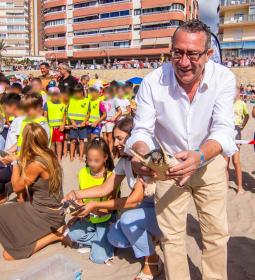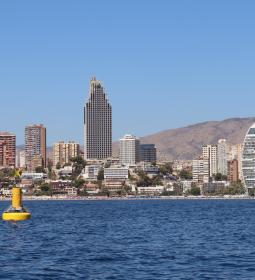The City Council incorporates the use of the ColorADD code in banners and information panels
Benidorm beaches, more inclusive with flags for colorblind people

This was announced by Mayor Toni Pérez, after the hoisting of the first of the banners in Mal Pas, together with the Councilor for Beaches, Mónica Gómez, technical staff from the concessionaire company, RA, and before the swimmers who were enjoying the beach and the good weather in Benidorm at the end of October.
Pérez has specified that it is “one more commitment to the inclusion and accessibility of Benidorm's beaches”. The mayor believes it is necessary to "sensitize" us to people who suffer from color blindness, "because it prevents them from differentiating colors, such as those that alert the state of the sea, with the consequent danger to their lives."
The mayor recalled that Benidorm offers one of the best "if not the best" lifeguard services on its beaches "always operational throughout the year, even in winter. As an example, it has highlighted "its three points of accessible beaches for people with reduced mobility", located "one in Levante and two in Poniente" and the fact that it is constantly "working to improve our sandbanks and coves", as evidenced by obtaining blue flags, 'Q' for Tourist Quality, Qualitur, or the Safe Tourism Certified badge,
What do they mean?
For her part, Mónica Gómez clarified that the ColorADD code is "a graphic system for identifying colors" so that they are distinguished by people with color blindness. In this way, “a diagonal bar with a triangle pointing to the right represents green; the central diagonal bar, yellow; and a triangle to the left, red”.
ColorADD is a normative system created in the laboratories of the University of Miño in Oporto (Portugal) that began to be applied internationally in 2010 and has "multiple applications - Gómez has abounded - in areas such as education, health, transport, labeling or inaccessibility, as evidenced by the beaches of Benidorm”.







